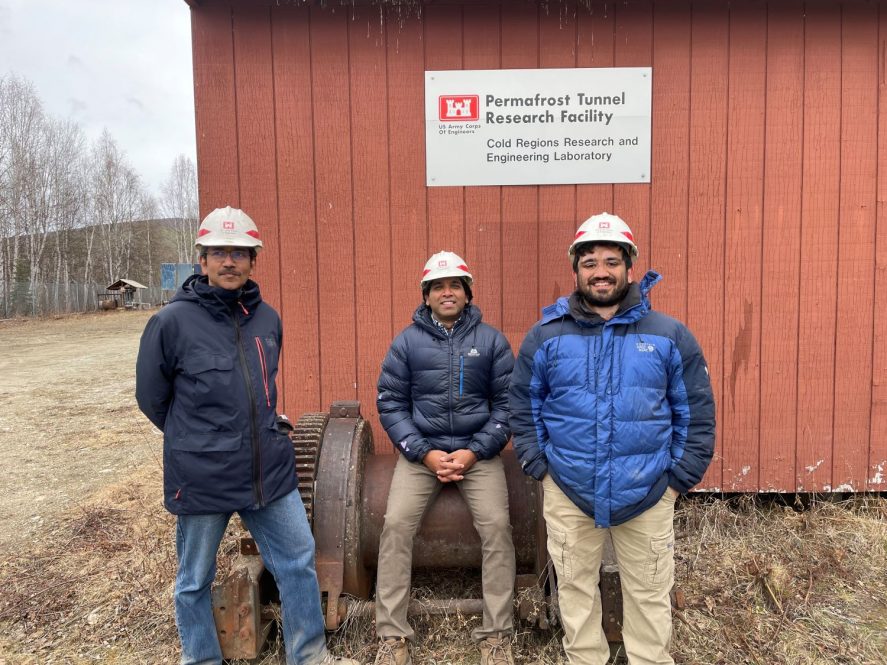The U.S. National Science Foundation (NSF) and the Department of Energy (DOE) recently announced 35 projects will be supported with computational time through the National Artificial Intelligence Research Resource (NAIRR) Pilot.
Chandi Witharana, assistant professor in the Department of Natural Resources and the Environment, will receive support in this inaugural cohort for his project “Use of AI and sub-meter resolution satellite imagery to map permafrost thaw disturbances and human-built infrastructure at pan-Arctic scale.”
The NAIRR Pilot marks a significant milestone in fostering responsible AI research across the nation, according to the NSF and DOE award announcement.
The NAIRR Pilot – a result of President Joe Biden’s Executive Order on the Safe, Secure and Trustworthy Development and Use of AI – will provide AI researchers and students access to key AI resources and data.
Twenty-seven projects will be supported through resources on NSF-funded advanced computing systems around the nation. An additional eight projects will have access to DOE-supported systems, including the Summit supercomputer at Oak Ridge National Laboratory and the AI Testbed at Argonne National Laboratory.
Witharana’s project will expand on his existing work to make remote sensing images of the Arctic more powerful and accessible.
The Arctic is experiencing more rapid warming than many other regions. This leads to degradation of permafrost at an alarming rate. Permafrost is the permanently frozen earth that remains at zero degrees Celsius or below for two or more consecutive years.
“Widespread disturbances from permafrost thaw are negatively impacting an array of natural processes and posing a serious threat to human-built environment by damaging buildings and critical infrastructure sitting on permafrost-affected ground,” says Witharana. “The disturbances also extend across the region, much of which is obviously remote. Support from the NAIRR Pilot program will allow us to improve the performance of our AI image pipeline by integrating new features and extending its capabilities to map more elements.”
NAIRR projects granted computing allocations in this initial round encompass a diverse range of AI-related areas, including investigations into language model safety and security, privacy and federated models, and privacy-preserving synthetic data generation. Other projects also focus on domain-specific research, such as using AI and satellite imagery to map permafrost disturbances, developing a foundation model for aquatic sciences, securing medical imaging data, and using AI for agricultural pest identification.
The NAIRR Pilot embodies a commitment to diversity and collaboration, recognizing that the strength of the U.S. AI ecosystem depends on having a research and educational community that reflects the diversity of the nation. By fostering a strong and responsible AI research ecosystem, the pilot aims to empower a wide range of perspectives and technical directions from researchers and educators from U.S. institutions, including those from underrepresented groups, nonprofits, and small businesses.
The NAIRR Pilot program plans to continue to expand, with a second cohort open for applications.
“While this is only the first step in our NAIRR efforts, we plan to rapidly expand our partnerships and secure the level of investments needed to realize the NAIRR vision and unlock the full potential of AI for the benefit of humanity and society,” says NSF Director Sethuraman Panchanathan.
This work relates to CAHNR’s Strategic Vision area focused on Advancing Adaptation and Resilience in a Changing Climate.
Follow UConn CAHNR on social media.



